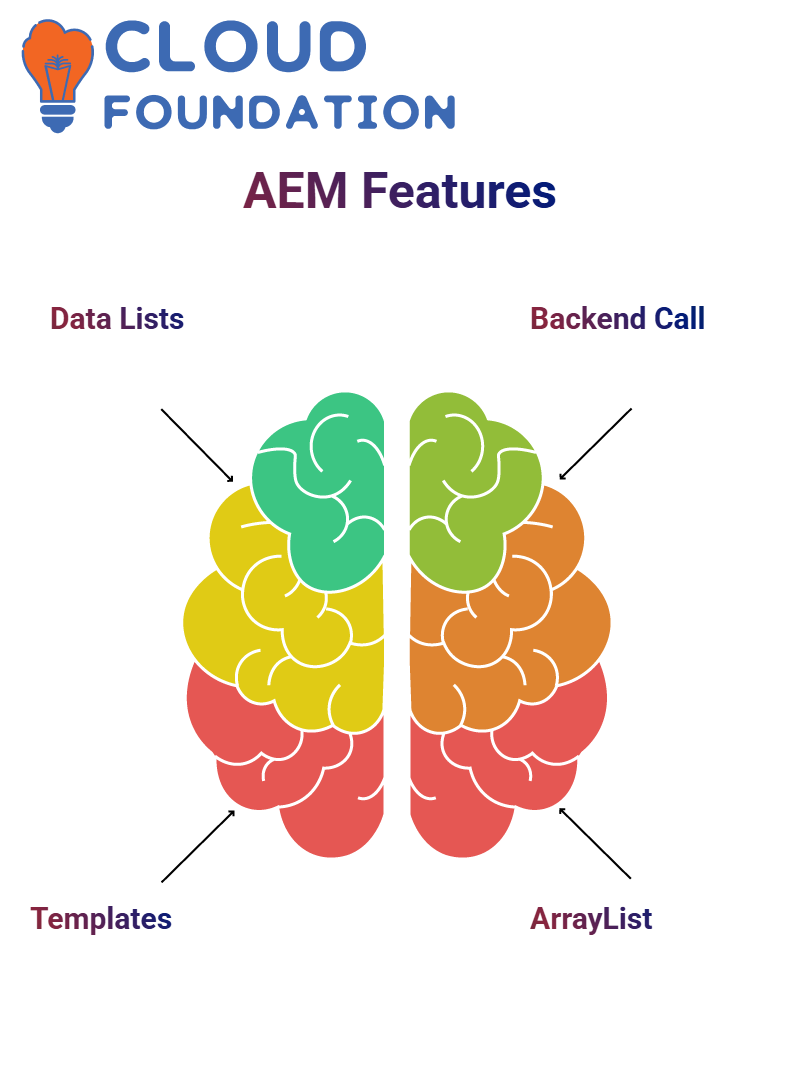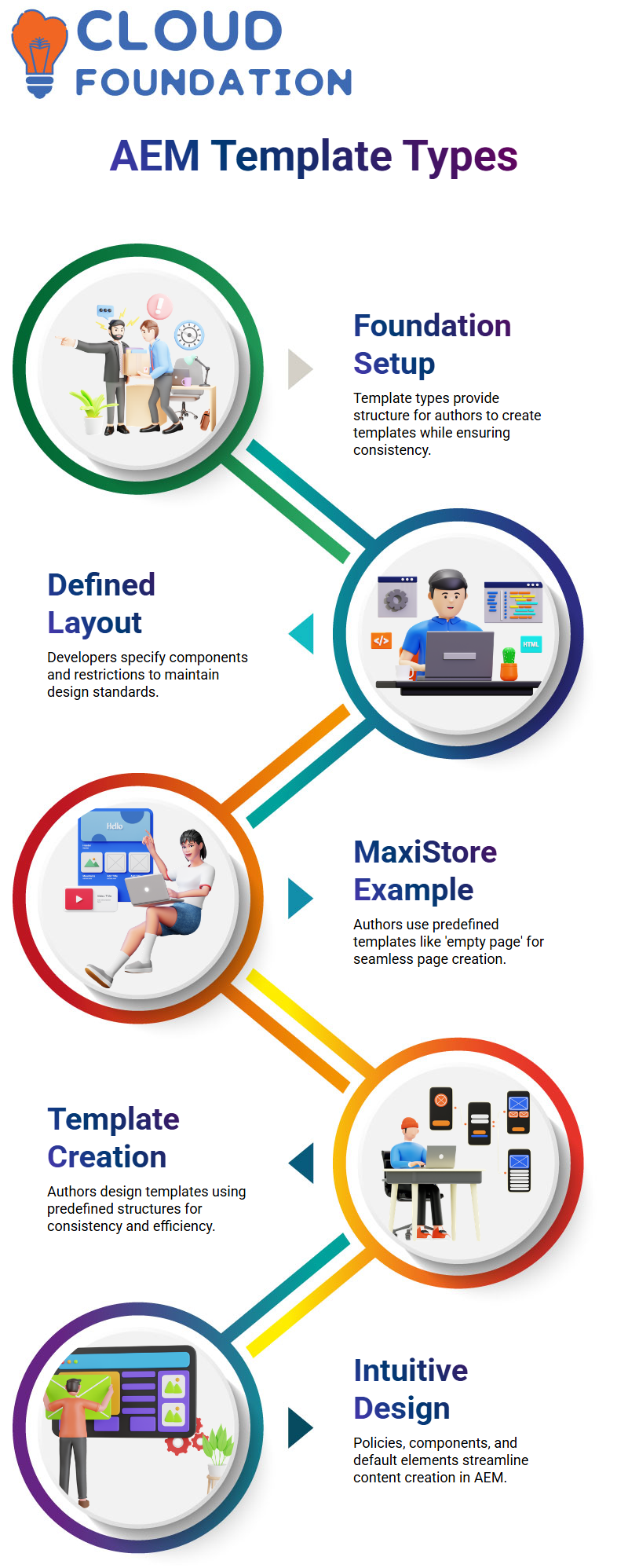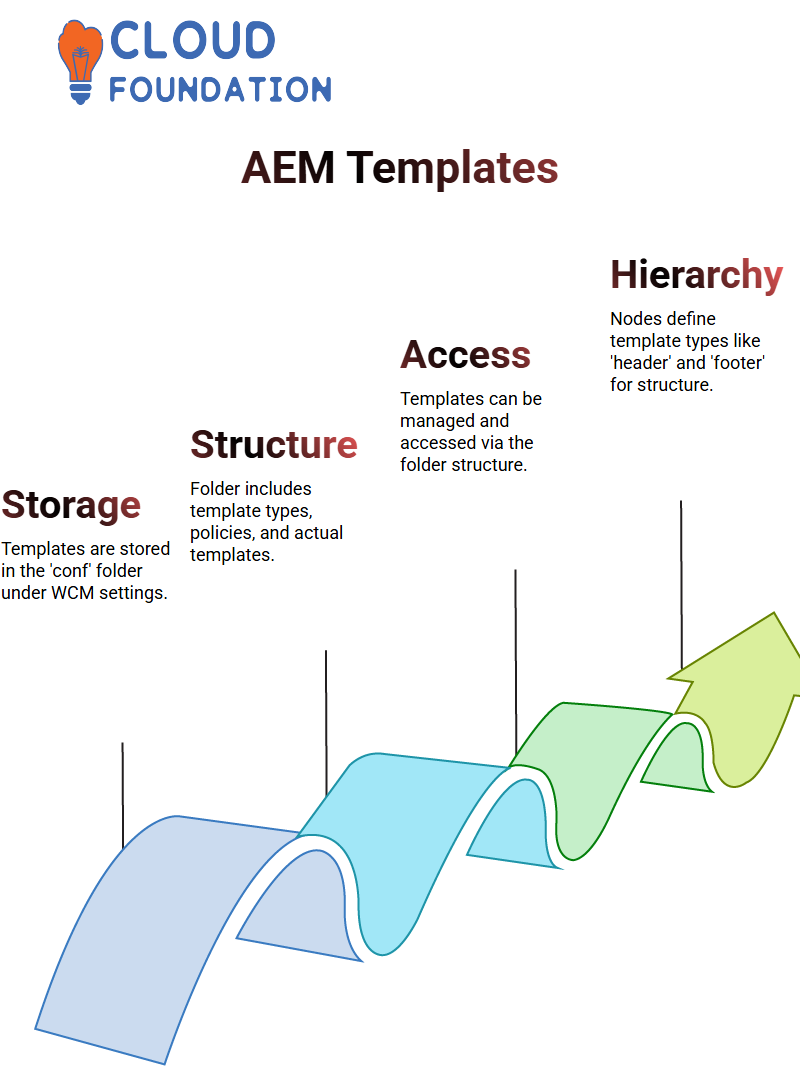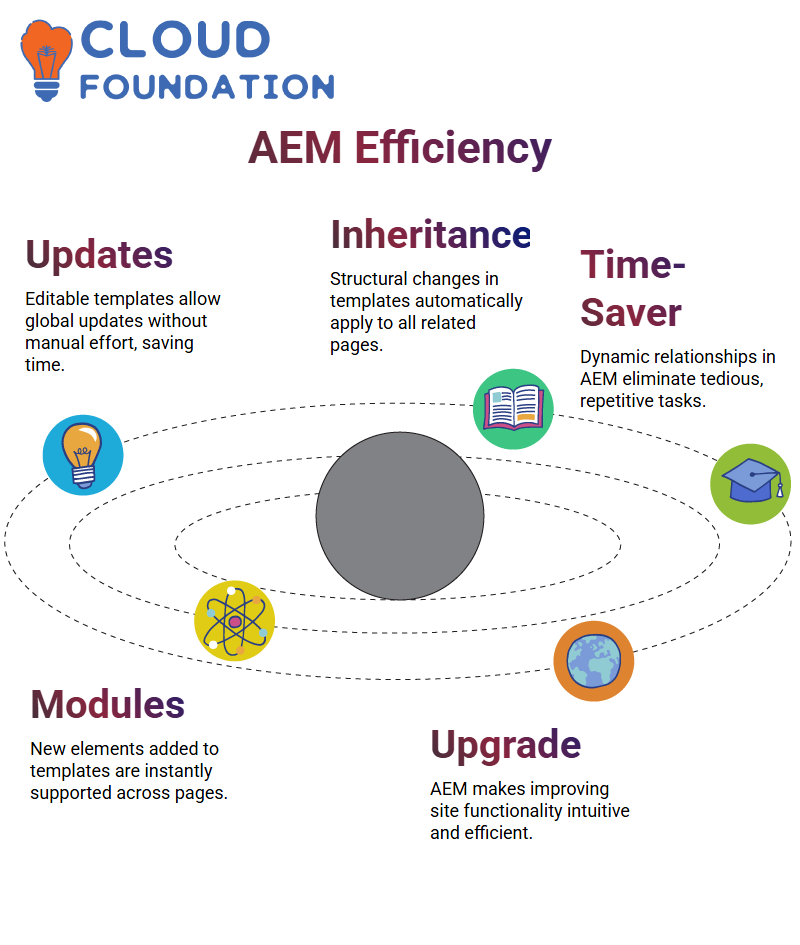AEM Essential Fields | AEM Templates
Understanding AEM Components and HTML Structure
As AEM requires working directly with HTML files, understanding how components interact is vital.
Each element in AEM must contain its own HTML file, with its name corresponding to that component, for seamless interaction between components and their HTML counterparts.
Data input through dialogues can be easily retrieved using properties within AEM components HTML that enable us to display user values on pages dynamically.
Accessing Dialogue Values in AEM
Reading values from dialogues in AEM is easy: use its name property to identify user-inputted data and dynamically access/display these values using dollar notation.
Example: if an author enters their first name into dialogue, we can retrieve it using/firstName to access that field.
Similarly, we can access other fields, like last name, using this notation.
Using Dot Slash Notation in AEM
AEM employs dot slash notation (./) for data stored within page structures. AEM can interpret this notation to locate and retrieve values as required by authors who input values.
These input values differ AEM will store them appropriately within its content hierarchy for seamless flow in components.
Dynamic UI Updates in AEM
AEM provides dynamic updates in dialogues based on user input.
This can be accomplished using jQuery or custom scripting.
When someone enters data in one field, another could appear conditionally as they type their information in another.
To accomplish this task, developers manipulate visibility settings using JavaScript and jQuery.
Client-Side Libraries in AEM
AEM uses client libraries to manage JavaScript and CSS dependencies efficiently, ensuring optimal project performance and modularity.

Understanding AEM’s client library concept is crucial when developing dynamic dialogue fields or validating specific fields within them.
Scripting in AEM Using Sightly
AEM uses Sightly (HTML) as its templating language for dynamic scripts. Sightly replaces JSP by offering a more modular approach to writing component logic.
With Sightly, developers can quickly retrieve dialogue values, apply conditions, and structure HTML.
Implementing Conditional Logic in AEM
Sightly allows developers to display dynamic content based on user input through conditional logic attributes like data-sly-test.
For instance, if the first name entered by the user is sample, then conditional statements can display relevant details for that name.
Manipulating HTML in AEM Components
AEM empowers developers to effectively structure HTML by taking advantage of AEM-specific attributes and tags.

Such as data-sly-include, which allows file inclusion within another file for modularity and reuse.
Understanding AEM for a Better HTML Workflow
AEM’s “slide” tag becomes your best all here using this tag could effectively remove redundant tags to ensure HTML remains neat and uncluttered.
Keep track of when you refresh the page to see how AEM handles surrounding tags.
Using Data Slide Lists in AEM for Iterations
One of the stand-out features in AEM is its “data slide list.”
If you ever struggled with iterating seamlessly through hash graphs in Excel, AEM makes this intuitive with its feature that displays them seamlessly as slide shows.
We tested using backend Java files returning an ArrayList to the frontend view as part of an experimentation session.
Connecting AEM’s data slide list to this backend was an effortless operation – another testament to AEM’s power.
It made for an unforgettable moment when exploring its capabilities for yourself.
Leveraging AEM Templates for Reusability
Making templates in AEM reminded me of writing functions in Java: you write your reusable HTML code, pass some parameters and watch as it’s magic takes shape.
Efficiency is key, along with modularity. I designed a flexible template that takes input parameters like name and age, making it adaptable and streamlined.
Can create consistent and clean HTML across my project by simply calling my template with these parameters.
Calling Backend Java Files through AEM
Another feature I found invaluable was AEM’s integration with backend Java files.
Using data slide use and call, connecting templates directly with backend logic was simple for instance, setting up a Java method that returned dynamic data.
Implementing AEM for this method was effortless and natural, providing an invaluable asset to anyone working across both frontend and backend technologies.
It truly represents an unprecedented advantage in their work process.
Simplifying Operations with AEM’s Data Slide Attributes
AEM’s various data slide attributes benefit site builders and web page editors.
AEM is particularly effective when combined with its data slide test feature for validating and testing various elements on my webpage.
In contrast, its various test options helped verify and check different aspects within it.
What makes AEM such a formidable force?
Another incredible feature was AEM’s DataSlideCall feature, enabling me to connect multiple templates and streamline operations efficiently.

Understanding AEM Templates
AEM templates offer captivating and flexible content management tools, making AEM content management effortless.
How dynamic HTML structures are created in AEM, AEM templates offer similar utility methods in Java for reuse while helping ensure a structured approach to code reusability and development.
At AEM, dynamic parameter passing is crucial to creating templates that operate as expected.
Instead of hardcoding values into templates directly, AEM provides us with the means for injecting parameters based on real-time conditions.
Providing greater flexibility and scalability than hardcoded values could allow.
Adobe has long provided AEM users with static templates; however, Adobe now advises all those using AEM to switch to editable templates.
They are game changers because any changes directly impact the pages created using these templates.
Let’s begin by understanding templates. AEM uses templates to build pages; without these building blocks, you cannot produce one.
Consider AEM templates like PowerPoint slides: they help streamline the design process so you don’t need to redesign each slide individually.
Having this method at your disposal means more efficiency when working on large volumes.
For instance, templates make designing 20 slides more efficient without starting from scratch on each one.
Rendering HTML Dynamically in AEM
AEM allows dynamically updating HTML files using predefined methods within templates, providing dynamic updates.
AEM ensures the output aligns with its parameters, whether a sample or custom implementation method is chosen, providing dynamic updates of your HTML files on demand.
AEM simplifies rendering so developers can focus more on building meaningful content structures rather than dealing with unnecessary complexities, providing teams working on dynamic web apps a massive edge in productivity.

Slightly in AEM: Simplifying HTML5
AEM allows dynamically updating HTML files using predefined methods within templates, providing dynamic updates.
AEM ensures the output aligns with its parameters, whether a sample or custom implementation method is chosen, providing dynamic updates of your HTML files on demand.
AEM simplifies rendering so developers can focus more on building meaningful content structures rather than dealing with unnecessary complexities, providing teams working on dynamic web apps a massive edge in productivity.
Security and Performance in AEM
AEM allows dynamically updating HTML files using predefined methods within templates, providing dynamic updates.
AEM ensures the output aligns with its parameters, whether a sample or custom implementation method is chosen, providing dynamic updates of your HTML files on demand.
AEM simplifies rendering so developers can focus more on building meaningful content structures rather than dealing with unnecessary complexities, providing teams working on dynamic web apps a massive edge in productivity.
Editable Templates and Their Benefits
Editable templates in AEM make life much more straightforward, enabling you to define reusable structures across multiple pages.
Perfect if you require consistent headers and footers across numerous web pages. Editable templates have got your back.
Once a template is created, any pages created from it will have the same style without needing to rework each time they change.
Where are AEM templates stored?
Clicking the Hammer Icon. Inside AEM’s Template Folder are predefined system and content pages that your company might utilise.
Exploring Template Types in AEM
As a developer in AEM, your role as an author is to develop template types. These template types serve as the foundation for authors when building specific templates.
You are also required to define basic components and layout for pages and restrict certain parts from being changed by the authors.
Maintaining consistency and compliance with design standards is paramount.
For instance, the MaxiStore folder offers an empty page template type that authors use when designing new templates.
Developers enable authors to design pages smoothly by creating responsive grids and components.
This collaboration speeds up content production in AEM.

Creating Templates Using Template Types
Designing templates in AEM with template types.
Created one called ‘MaxiStore Empty Page,’ which allows authors to design custom pages to their liking.
These templates establish the structure and layout for various pages, assuring they follow the design framework of their template type.
Process includes setting policies, components and restrictions within each template type.
Developers can even specify default components for all templates derived from them.
Assuring an intuitive and straightforward experience empowers authors to focus on creating content rather than worrying about design consistency.
Finding Templates in AEM
Where Are AEM Templates Stored?
AEM’s templates can be found within the WCM settings ‘conf’ folder. They can be accessed and managed directly by accessing or browsing this location.
Each template type contains its respective template type’s policies as well as actual templates, which you can find by browsing into this location.
Each page created within AEM will show its associated template details.
For instance, if using a system page template to build out your test page, its template will be stored within its associated folder, ensuring all elements remain accessible and manageable within AEM.
Understanding the AEM Template Creation
Workflow when using AEM templates: to date. When building pages using an existing template, their header and footer remain consistent across pages as part of their design.

Use a unique title component as part of their header that serves as the identifier for that template.
It’s astonishing how AEM allows me to structure and customise templates according to my requirements.
Building AEM Templates
AEM allows users to create nodes, name them and assign specific types such as “header” and “footer.” This hierarchy helps keep structures organised.
Guarantee that each template type has an identifiable source, creating templates explicitly tailored for design requirements using AEM.
AEM Template Author’s Role
As an AEM template author, it is your role to outline the template’s structure and initial layout.
For instance, how will the header and footer elements behave?
Before locking or unlocking specific components to allow or restrict edits by page authors.
Utilising AEM’s flexibility ensures that creating dynamic templates is effortless.
Defining AEM Page Author Permissions
How do page author permissions work in AEM?
Lock specific components in the template, like the header and footer, to ensure consistency across pages.
Unlocking components, on the other hand, allows page authors to make changes.
This control in AEM will enable me to manage template integrity while offering flexibility.
Policies in AEM Templates
AEM provides policies to enhance template management. Policies specify what components can be added to a page using a specific template, thus assuring compatibility and design uniformity across pages.
For instance, each policy may specify components compatible with its template that ensure compatibility and design uniformity across pages.
AEM’s policy-driven approach makes it intuitive and straightforward for me to adapt templates for different uses.
Understanding AEM Policies and Their Impact on Components
Imagine this: when setting up components for an AEM project, you want to add new elements.
Thanks to an AEM policy created, various elements can easily be added to pages thanks to the policy.
With AEM, creating such policies becomes straightforward and increases flexibility for developers.
The Structure and Initial Content in AEM Templates
Structure and Initial Content when working with AEM templates. Think of structure as being like the backbone for your template.

It defines its layout while supporting dynamic updates. Meanwhile, initial content provides the starting point for all pages created within AEM.
Remember that making changes in the initial content won’t impact existing pages only new pages will inherit this setting.
Editable vs Static Templates in AEM
Editor templates in AEM can be transformative: they allow dynamic relationships between templates and pages.
Editable templates can then be changed with one update, reflecting all related pages automatically.
Static templates prevented this possibility each page remained disconnected from its respective template.
The Power of Dynamic Relationships in AEM
Dynamic relationships within AEM templates make global updates simple.
Let’s create 100 pages from an editable template; by updating its structure, you can ensure all these pages inherit any changes made.
Automation saves an immense amount of time by automating tedious manual updates.

Effortlessly Adding New Components in AEM
Add new components to your AEM template seamlessly update its structure, and they’re available across your pages.
With AEM, enhancing site functionality becomes intuitive and efficient.
Policies and Their Role in AEM Templates
Policies play a pivotal role in AEM by outlining which components can be added to specific templates.
By assigning policies, you have complete control of their behaviour and availability across your templates, keeping your AEM project manageable and organised at every turn.
Mastering Template Types and Content in AEM
These templates form the cornerstone for page development template authors can modify them further as desired.
AEM developers can streamline content production by prioritising specific template types, allowing room for creativity while streamlining creation processes efficiently.

Sai Susmitha
Author



